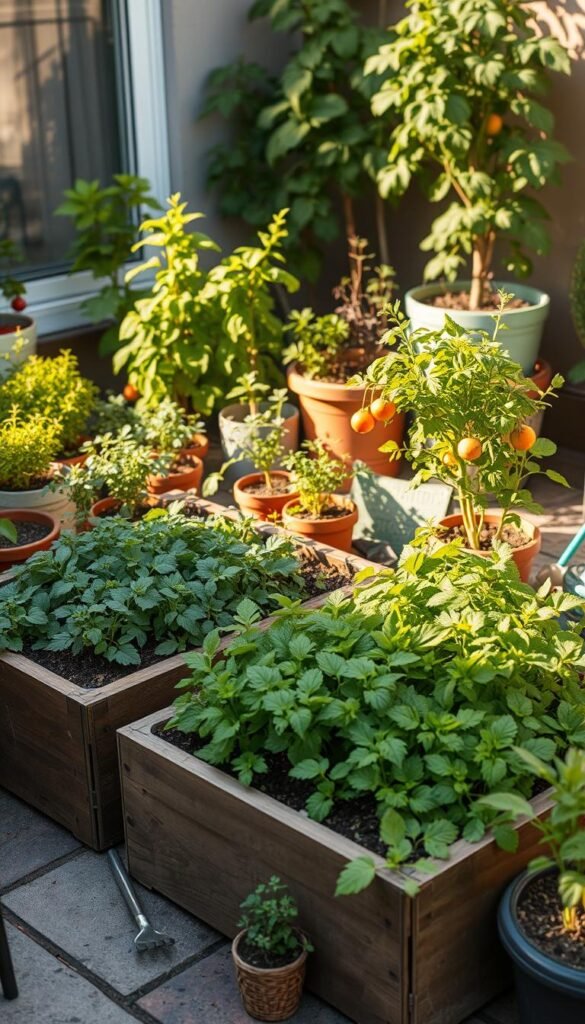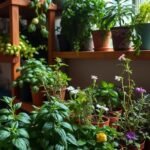Think your outdoor area is too tiny for fresh produce? Think again. With smart design and a dash of creativity, even a balcony or postage-stamp patio can become a thriving source of homegrown greens. The secret lies in reimagining how you use every inch of available space.
Modern gardening isn’t about sprawling plots—it’s about working smarter, not harder. By using vertical planters, stackable containers, and narrow raised beds, you’ll discover how to pack more flavor into less square footage. These solutions aren’t just space-savers; they’re productivity boosters that simplify maintenance.
What makes compact setups special? They force you to prioritize quality over quantity. You’ll focus on high-yield crops like cherry tomatoes and herbs that thrive in cozy conditions. This approach reduces waste while delivering fresher ingredients than store-bought alternatives.
The best part? You don’t need fancy tools or a green thumb to start. With basic materials and clever strategies, anyone can turn overlooked corners into edible oases. Ready to transform your limited area into a lush, functional garden? Let’s dig into the techniques that make small-scale growing surprisingly rewarding.
Understanding the World of Mini Vegetable Gardens

Who says you need acres to grow your favorite veggies? These clever growing systems let you cultivate fresh produce anywhere—from fire escapes to tiny patios. Unlike traditional plots, they focus on strategic design rather than square footage.
What is a Mini Vegetable Garden?
It’s a concentrated approach where plants share tight quarters for mutual benefit. Imagine basil shielding tomatoes from pests while marigolds attract pollinators nearby. This interplanting method creates symbiotic relationships, letting you grow 3x more in the same space.
Benefits of Compact Gardening
Smaller setups mean less weeding and faster problem-spotting. You’ll water smarter, not harder—containers and raised beds prevent wasted resources. Research shows these gardens yield 1.5 lbs of food per square foot annually when managed well.
New growers love the low commitment. Start with 2-3 pots of herbs, then expand as confidence grows. You’ll master soil health faster by focusing on specific zones rather than wrestling with endless rows.
Selecting the Perfect Space for Your Garden
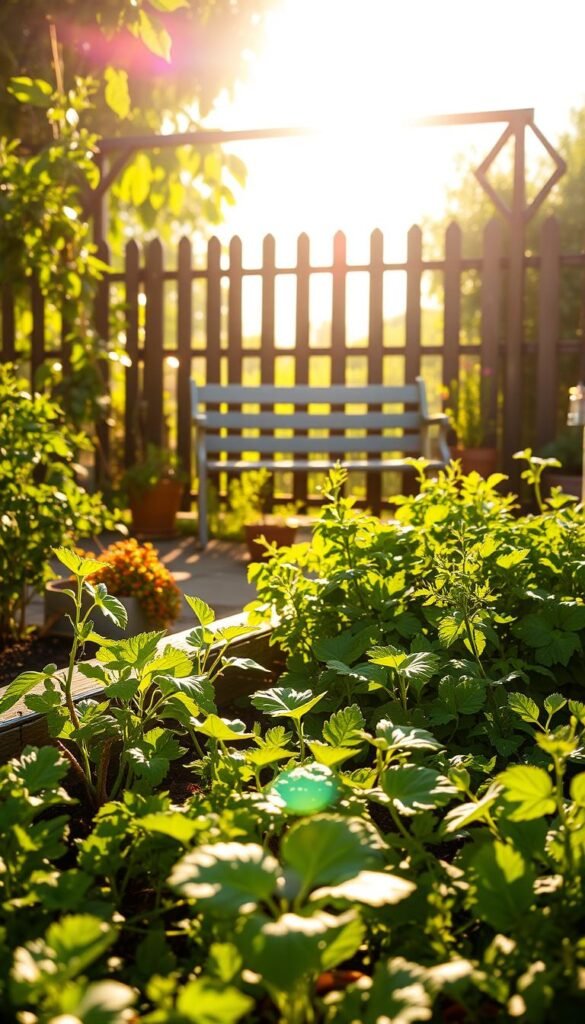
Where you place your plants can make or break your harvest. Start by identifying areas that balance practicality with growth potential—even a forgotten yard corner or narrow patio edge holds promise.
Assessing Your Outdoor Area
Track how light moves through your space over three days. Fruiting plants like tomatoes demand 6-8 hours of direct sunlight, while leafy greens thrive with just four. Use this quick reference table to match crops with your conditions:
| Plant Type | Daily Sun Needs | Ideal Placement |
|---|---|---|
| Tomatoes/Peppers | 6-8 hours | South-facing walls |
| Lettuce/Spinach | 4 hours | East-side containers |
| Herbs | 4-6 hours | Mobile planters |
Maximizing Sunlight and Accessibility
Shift containers weekly if trees block light. No south-facing options? Try grow vegetables in tight quarters using reflective surfaces near north walls.
Keep pathways clear—you should reach every plant without stepping on soil. Measure the distance to your water source. Anything beyond 10 feet calls for drip irrigation or a watering can station.
Watch how winter shadows differ from summer patterns. What’s sunny in June might be shaded in October. Adapt by rotating crops or using cold frames when seasons change.
Designing Compact Raised Beds for Your Garden
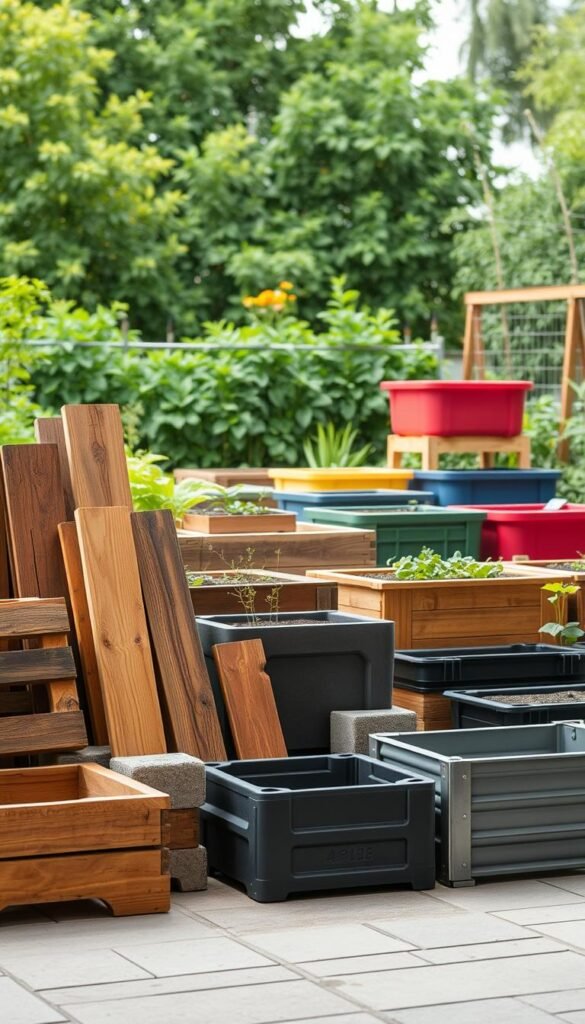
Elevate your gardening game using space-efficient structures that optimize every inch. Expert designer Jen McDonald of Garden Girls recommends a 2-foot height for comfort and a 4-foot maximum width. “This setup lets you tend plants without straining your back,” she notes, “while keeping all crops within arm’s reach.”
Choosing the Right Materials
Durability meets style in these popular options:
| Material | Cost | Lifespan | Best For |
|---|---|---|---|
| Cedar | $$ | 10-15 years | Natural aesthetics |
| Galvanized Steel | $$$ | 25+ years | Modern spaces |
| Concrete Blocks | $ | Permanent | Sloped areas |
Improving Soil Drainage and Maintenance
Start with a 3-inch gravel base under your structure. This prevents soggy roots during heavy rains. For wooden frames, apply wood sealer annually to block rot.
Mix equal parts compost, topsoil, and coarse sand for ideal growing conditions. This blend lets water flow freely while retaining nutrients. Follow our step-by-step raised bed construction guide to ensure proper slope and stability.
Innovative Container Gardening Solutions
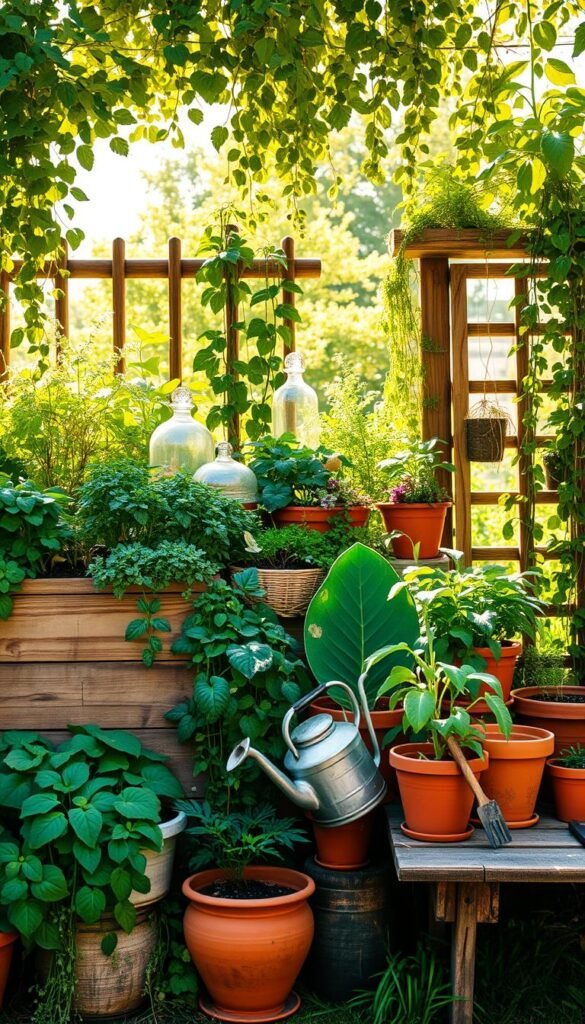
Who needs sprawling fields when your dinner ingredients can thrive on a stair step? Container gardening turns overlooked nooks into edible hotspots. Balcony railings, windowsills, and even old shelves become prime real estate for fresh flavors.
Choosing Pots, Buckets, and Bins
Start with drainage holes—non-negotiable for healthy roots. A 20-inch wide tub holds six crops: kale, spinach, and arugula share space with pest-repelling marigolds. Mobility matters. Lightweight plastic planters let you chase sunlight across patios.
Bush cucumbers and dwarf tomatoes thrive in 5-gallon buckets. For herbs, try hanging baskets near kitchen windows. Repurpose old storage bins—just drill holes and add wheels for easy rotation.
Top picks for small spaces:
- San Marzano tomatoes (sauces in a pot)
- Cucamelons (crunchy snacks)
- Rainbow chard (colorful salads)
Mix potting soil with perlite for better drainage. Fertilize every three weeks—containers flush nutrients faster than ground soil. Rotate crops seasonally; swap spring greens for fall carrots in the same planter.
Embracing Vertical Gardening Techniques
Why let gravity limit your harvest when you can grow skyward? Vertical gardening turns walls and railings into productive landscapes. By training plants to climb and cascade, you create layered beauty while multiplying your growing area.
Trellis Systems and Hanging Baskets
A simple PVC frame transforms into a sturdy support system. Paint it matte black to blend with fences or walls. Use twine to create a grid for beans and cucumbers—they’ll climb naturally without crowding ground-level plants.
Hanging baskets aren’t just for flowers. Try cherry tomatoes that spill over edges or mint that perfumes the air. Strawberries thrive in these elevated homes, safe from slugs and soil splashes. Rotate baskets weekly for even sun exposure.
DIY Vertical Garden Ideas
Repurpose old pallets into herb walls—each slat holds a different culinary favorite. Attach felt pockets to sunny walls for lettuce mixes. One gardener transformed a rusty ladder into a tiered planter for peppers and basil.
Consider weight when designing structures. A 4-foot cedar trellis holds 15 lbs of vining crops. Use wall anchors rated for outdoor use. Position vertical features where you can easily reach for pruning and picking.
These ideas prove that vertical space is your most underused asset. Start small with a single trellis, then expand as your confidence grows. You’ll soon harvest from eye level to overhead—no bending required.
Smart Ideas for Urban and Balcony Gardens
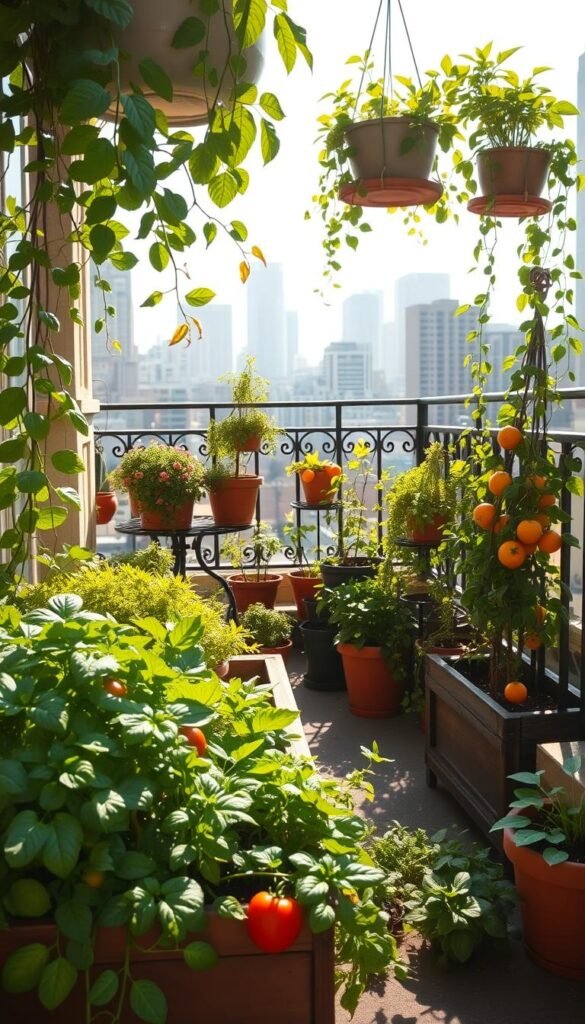
City living doesn’t mean sacrificing fresh flavors at your doorstep. Wheeled planters let you chase sunlight across concrete jungles—roll tomatoes toward morning rays, then shift leafy greens to afternoon shade. Mobility solves the #1 urban challenge: inconsistent light patterns.
Transform narrow patio edges into edible displays. A 3-square-meter setup (about 10×3 feet) can hold 15 crops—try dwarf peppers, bush beans, and rainbow chard. Use vertical stackers to add herbs like thyme and oregano without stealing floor space.
Colorful fabric pots bring life to gray corners. Pair crimson lettuce with golden marigolds in matching containers for visual pop. Pro tip: Paint dull walls with light-reflective colors to boost growth in shady zones.
Beat air pollution by choosing resilient varieties. Kale and Swiss chard tolerate city smog better than delicate greens. Line planters with activated charcoal filters to purify soil—a trick rooftop gardening enthusiasts swear by.
Shared spaces spark connections. Coordinate with neighbors to create rotating container displays. One balcony grows basil, another hosts cherry tomatoes—swap harvests for instant caprese salads. Even tiny patio setups become conversation starters that nourish both plates and communities.
Mini Vegetable Garden: Compact Raised Beds and Container Hacks
What if your growing spaces could work together like puzzle pieces? Combining different planting methods creates a powerhouse system where each element supports the others. Let’s explore how to make your limited area work harder while keeping maintenance simple.
Blending Planting Styles
Pair raised beds with movable containers for ultimate flexibility. Use permanent structures for heavy feeders like tomatoes, then surround them with pots of basil and parsley. This setup lets you rotate nutrient-hungry vegetables while keeping herbs within easy reach.
Strategic Plant Partnerships
Smart pairings boost yields and deter pests naturally. Try these proven combinations:
| Main Crop | Companion Plant | Benefit |
|---|---|---|
| Tomatoes | Marigolds | Repel nematodes |
| Cucumbers | Dill | Attract pollinators |
| Peppers | Oregano | Deter aphids |
Pack plants closer than seed packets suggest—leafy greens thrive shoulder-to-shoulder. Add trailing nasturtiums to garden bed edges; their vibrant flowers deter pests while covering bare soil.
Containers become your secret weapon. Grow mint in pots near cabbage to repel moths, but keep it contained to prevent spreading. This hybrid approach lets you experiment with plant partnerships while maintaining control over your growing conditions.
Creative Planter Hacks and Window Box Inspirations
Your kitchen window might hold more potential than you realize. With smart design, narrow ledges become thriving ecosystems that blend function with beauty. Let’s explore how to maximize these often-overlooked spaces.
Transforming Windowsills Into Green Oases
Shallow-rooted herbs like thyme and oregano flourish in sun-drenched windowsills. Use modular trays with individual compartments to grow multiple varieties without crowding. Repurpose spice jars as mini terrariums for succulents—their compact size fits snugly against glass panes.
Try stacking acrylic shelves on south-facing windows. Each level holds a different crop: microgreens up top, trailing ivy below. Paint recycled tin cans in bold colors for cheerful herb displays that match your decor. Line them with coffee filters to prevent soil leaks.
For north-facing spots, install LED grow lights beneath cabinets. Stick-on waterproof planters let you cultivate basil right above the sink. Rotate pots weekly so stems don’t lean toward sunlight. These space-saving solutions prove that fresh flavors belong where you prep meals.
Start with a single teacup planter of chives. As confidence grows, expand to wall-mounted troughs bursting with edible flowers. Your windows will transition from mere light sources to living landscapes that nourish body and soul.
